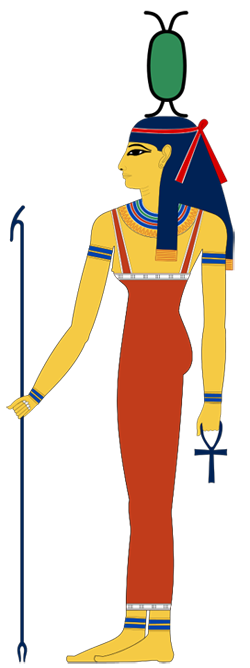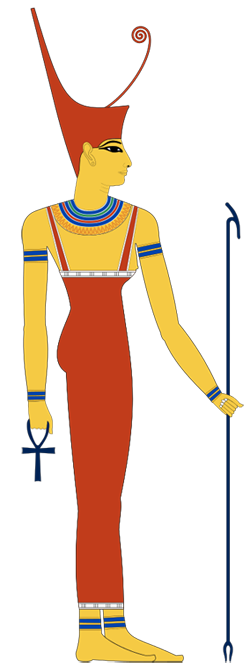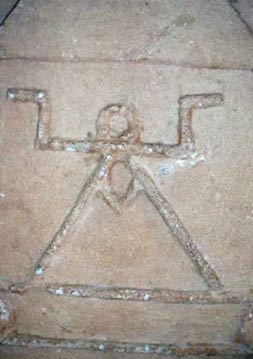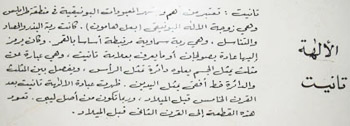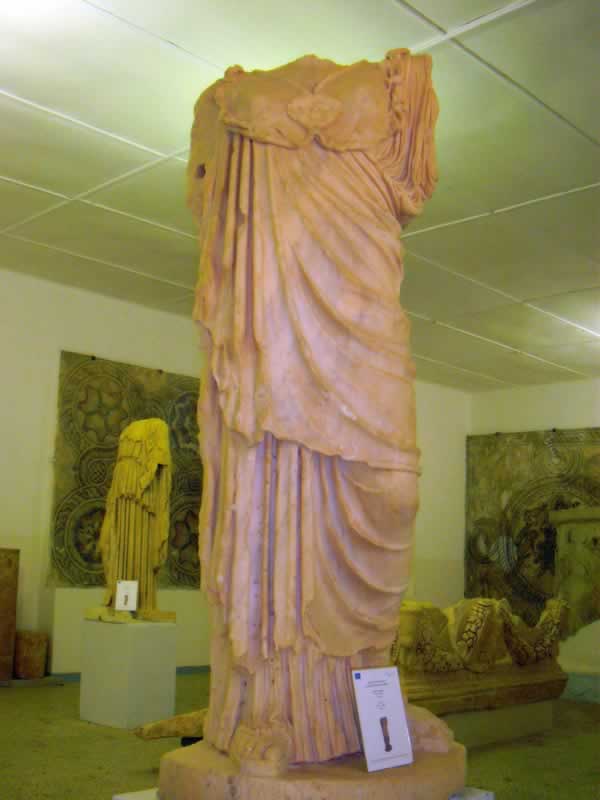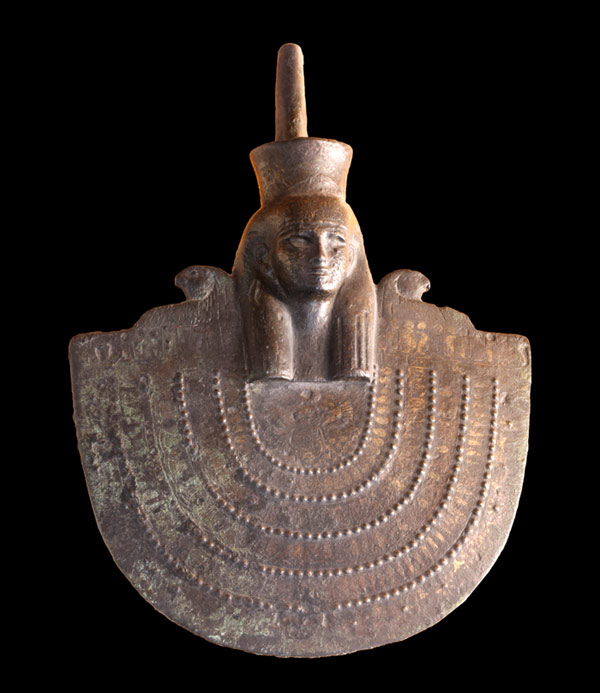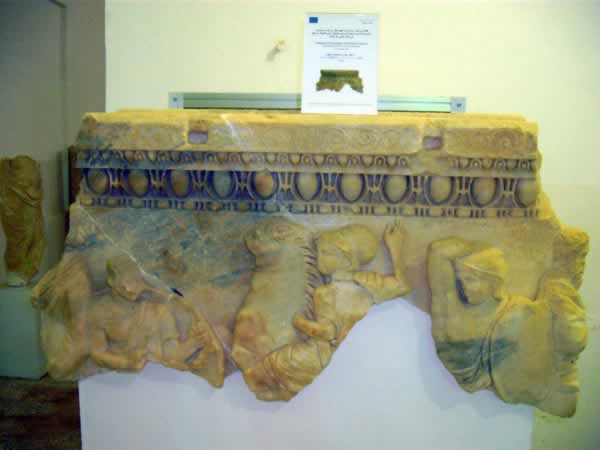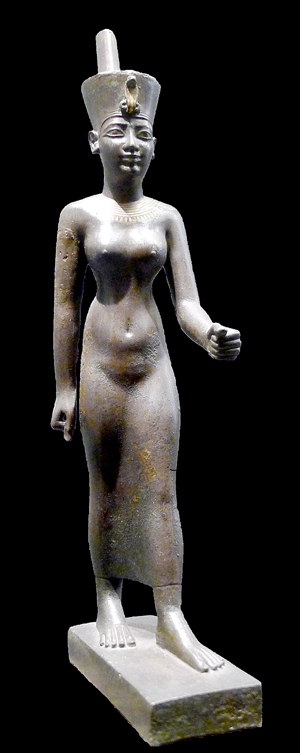Tanemmirt n Tannit Tamazivt
|
|
The Libyan Berber Goddess Tannit (Neith)
Tannit or Neith is originally a Berber Libyan Goddess venerated by the Berbers of North Africa from immemorial times. Poets and scholars of all ages knew Her as the Goddess Neith. There is no doubt that the Nit of the Ancient Egyptians, Tanit of the Phoenicians, and Athena of the Greeks were none other than the Libyan Goddess Tannit. The Goddess Neith is one of the oldest goddesses in the world and her shrine was attested in Egypt from pre-dynastic times. She was the patron deity of the city of Sais, in the Western Nile Delta of Lower Egypt. Her Berber name Tannit was said to mean Ta-Nit, meaning "the Land of Nit", in reference to ancient Libya (today's North Africa as a whole) being Her original home. According to Herodotus Tannit (whom he called Athena) was venerated by the Libyan Amazon around Lake Tritonis. The meaning of Neith's name was interpreted in many ways, the most popular of which associates the her with water as the personification of the primordial waters of creation and thus She was said to be the Creator Goddess. Her name also associates her with "wisdom" and "law" and as such She was the arbiter in the Horus-Seth dispute and thus the keeper of Cosmic Order.
The following Arabic text, also displayed under the stone, describes the above symbol of Tannit . Translation: "The Goddess Tannit. Tannit is regarded as one of the most famous and important Punic goddesses in Tripolitania. She is the wife of the Punic god Bal Hamon. She was the goddess of sowing, harvest and fertility, and a sky goddess essentially associated with the moon. Her symbol, known as the symbol of Tannit, is a triangle representing the human body, surmounted by a circle representing the head, and separated by a horizontal line which represents the hands. The worship of the goddess Tannit emerged after the 5th century BC. She appears to be of Libyan origin. This piece is from the 2nd century BC. " [End of translation.]
Neith (Athena), Tolmeita Museum, Cyrenaica, Libya. A commanding statue of the Goddess Athena, the Libyan Goddess Neith, the Egyptian Nit. In ancient time the Libyan Goddess Neith was venerated by most of the Mediterranean people including the Ancient Egyptians, Sumerians, the Babylonians, the Greeks, the Romans, etc.
The Egyptians and the Berbers share the same heritage and speak sister languages belonging to the same Hamitic branch of the Afro-Asiatic Language Family. The Egyptian worshipped the Berber Goddess Neith since pre dynastic times under various names including Net and Nit. Her main city was Tanis in north Egypt - an area was inhabited by Berbers long before the pharaohs' invasion of the Lower Egypt.
ParthenogenesisAs the Virgin Mother Goddess the Goddess Neith had no male consort. She was the one who existed, who is and who will be. Hence her parthenogenesis nature as the Mother of Osiris (in the form of Isis) was later transferred to Mary, the Mother of Jesus Christ.
Neith's Symbols & Emblems
As a goddess of war she was represented with two crossed arrows over a shield and hence the maker of warriors' arms. As a goddess of weaving she was often pictured in ancient art with a loom's shuttle on top of her head while holding a bow and arrows in her hands. At other times she is depicted as a woman with the head of a lioness (the power goddess), and at times as a cow (as a mother goddess). For example, She is the “Great Cow who gave birth to Ra”.
Neith's FestivalThe festival of the Goddess Nit or Net was celebrated with lights and fire. The "Feast of Lamps" was held in Ancient Egypt in her honour, in which lights were kept burning all night in the open air.
Neith's Temple
The Libyan Amazons
A sarcophagus fragment showing the Libyan Amazons in action.
According to several historical records, the Libyan birthplace of the Goddess Neith was also the traditional homeland of the warrior women known as the Libyan Amazons, in the western parts of Libya, particularly around the legendary Lake Tritonis (southern Tunisia today). The etymology of the name "Amazon" is still undecided, with European enthusiasts deriving the name from Greek Muse, and Berberists linking it with Amazigh and Tamezyant. The purely matriarchal world of the Amazons was ruled by women warrior-priestesses, in which they followed a manner of life unlike those that which prevailed among other races at the time or those that followed. There were a number of fake tales about removing one of their breasts in order to be able to shoot better (using the arrow & bow) and about abandoning their sons, without presenting any evidence; leading to careful mythographers to suggest that these were no more than mere patriarchal allegations to discredit matriarchy; and hence the whole existence of the Amazons itself was dismissed as "myth". According to Robert Graves, Diodorus Siculus' legend regarding the Libyan Atlantians, from whom Libyan Amazons seized their city Cerne, cannot be archeologically dated, but he makes it precede a Libyan invasion of the Aegean Islands and Thrace. The Libyan Gorgon Medusa, who often led the Libyans of Lake Tritonis in battle, against her enemies, was said to have once been a beautiful maiden until Poseidon lay with her and incurred the enmity of the goddess Athena, who turned Medusa's lovely hair into serpents and made her face so hideous that a glimpse of it would instantly turn man into stone. Jealous Athena helped brave Perseus, who was coming from Argos with an army, to behead Medusa; and the drops of blood that fell from Medusa's severed head onto the Libyan sand were transformed into snakes.
For
published information about the Libyan Goddess Neith please see Wikipedia's
page.
|

